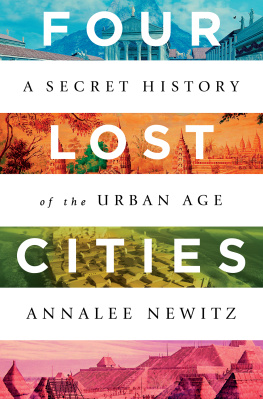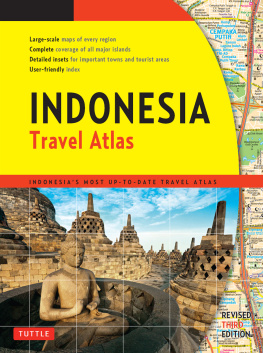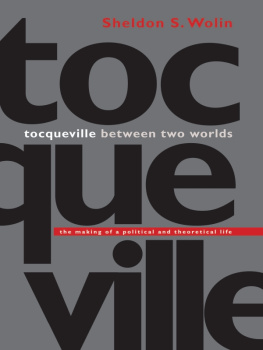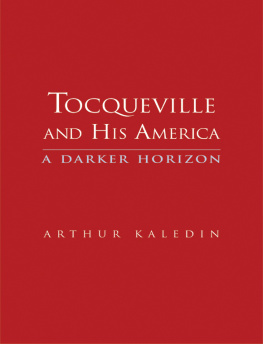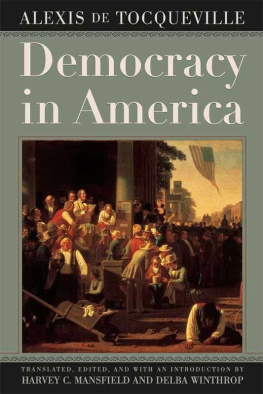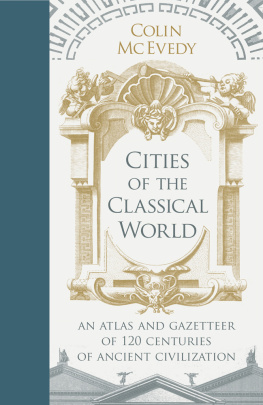Aude de Tocqueville - Atlas of Lost Cities
Here you can read online Aude de Tocqueville - Atlas of Lost Cities full text of the book (entire story) in english for free. Download pdf and epub, get meaning, cover and reviews about this ebook. year: 2016, publisher: Hachette Books, genre: Religion. Description of the work, (preface) as well as reviews are available. Best literature library LitArk.com created for fans of good reading and offers a wide selection of genres:
Romance novel
Science fiction
Adventure
Detective
Science
History
Home and family
Prose
Art
Politics
Computer
Non-fiction
Religion
Business
Children
Humor
Choose a favorite category and find really read worthwhile books. Enjoy immersion in the world of imagination, feel the emotions of the characters or learn something new for yourself, make an fascinating discovery.

- Book:Atlas of Lost Cities
- Author:
- Publisher:Hachette Books
- Genre:
- Year:2016
- Rating:4 / 5
- Favourites:Add to favourites
- Your mark:
- 80
- 1
- 2
- 3
- 4
- 5
Atlas of Lost Cities: summary, description and annotation
We offer to read an annotation, description, summary or preface (depends on what the author of the book "Atlas of Lost Cities" wrote himself). If you haven't found the necessary information about the book — write in the comments, we will try to find it.
Atlas of Lost Cities — read online for free the complete book (whole text) full work
Below is the text of the book, divided by pages. System saving the place of the last page read, allows you to conveniently read the book "Atlas of Lost Cities" online for free, without having to search again every time where you left off. Put a bookmark, and you can go to the page where you finished reading at any time.
Font size:
Interval:
Bookmark:
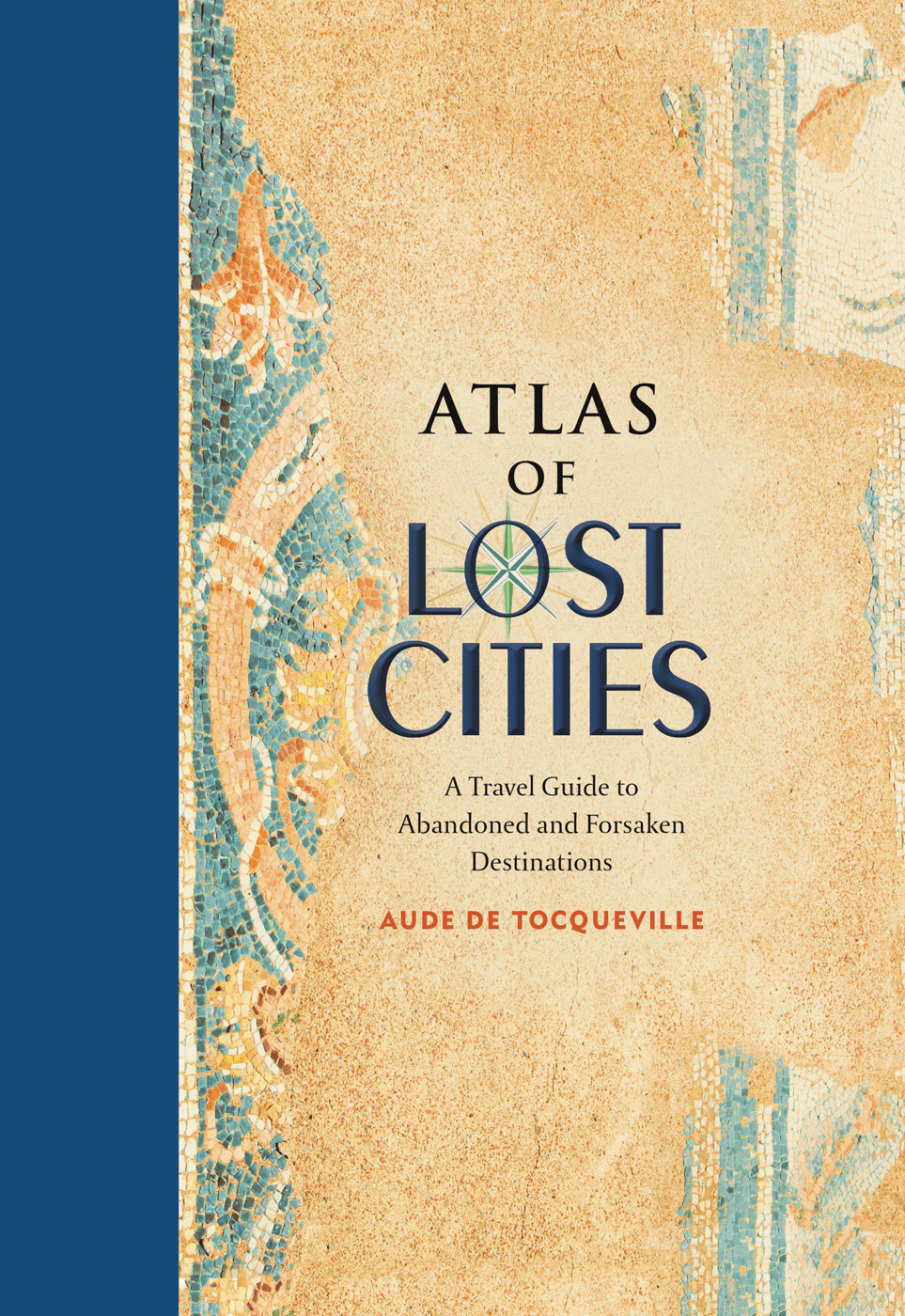
In accordance with the U.S. Copyright Act of 1976, the scanning, uploading, and electronic sharing of any part of this book without the permission of the publisher constitute unlawful piracy and theft of the authors intellectual property. If you would like to use material from the book (other than for review purposes), prior written permission must be obtained by contacting the publisher at permissions@hbgusa.com. Thank you for your support of the authors rights.
To receive special offers, bonus content, and news about ourlatest ebooks and apps, sign up for our newsletters.
Sign Up
Or visit us at hachettebookgroup.com/newsletters
Copyright 2014 Flammarion, Paris
Translation copyright 2016 Black Dog & Leventhal Publishers
All rights reserved. In accordance with the U.S. Copyright Act of 1976, the scanning, uploading, and electronic sharing of any part of this book without the permission of the publisher constitute unlawful piracy and theft of the authors intellectual property. If you would like to use material from the book (other than for review purposes), prior written permission must be obtained by contacting the publisher at permissions@hbgusa.com. Thank you for your support of the authors rights.
Black Dog & Leventhal Publishers
Hachette Book Group
1290 Avenue of the Americas, New York, NY 10104
hachettegroup.com
blackdogandleventhal.com
First ebook edition: April 2016
Black Dog & Leventhal Publishers is an imprint of Hachette Books, a division of Hachette Book Group.
The Black Dog & Leventhal Publishers name and logo are trademarks of Hachette Book Group, Inc.
The Hachette Speakers Bureau provides a wide range of authors for speaking events. To find out more, go to www.HachetteSpeakersBureau.com or call (866) 376-6591.
The publisher is not responsible for websites (or their content) that are not owned by the publisher.
ISBN 978-0-316-35582-7
E3
This work is based on an idea by Grard and Virginie Grandval, to whom we express our heartfelt thanks.
The catalog of forms is infinite. For as long as forms have yet to find their city, new cities will continue to be born. The end of the city begins at the point where forms exhaust their variety and come apart.
Italo Calvino, Invisible Cities

O ne November day on my way back from Agra, the city famous for the Taj Mahal, I stopped off at Fatehpur Sikri. At the gates of this city built by a Mughal emperor in the sixteenth century, the tumultuous din of Indian life melted away and the bare stones were engulfed by silence. I was struck by the spatial harmony, by the refined architecture of the palaces, courtyards, and terraces, which are all of the same pink color, by the mineral purity of this city perched on a hill at the heart of an immense plain. My thoughts then turned to those who had once invested these walls with life: Akbar, the universal thinker and founder of Fatehpur Sikri, conversing with Jesuit priests in the main courtyard; the women of the harem leaning over their balconies to watch the sun go down; the guards dozing in gloomy recesses. On a large door of Mughal design I came across some calligraphic inscriptions executed by artist-philosophers. One of them proclaimed: The world is nothing but a footbridge. Cross over without stopping to erect your house there. During the course of my stroll, I became enchanted by this city that time, in depriving it of its perfumes and wall hangings, had rendered more beautiful still.
How to explain the magic of Fatehpur Sikri? How to explain the magic of an abandoned city? Fond as I am of cities, which can be seen as open worlds in a state of perpetual metamorphosis, I am even fonder of dead cities, where the imagination can run free. For the very reason that somewhere no longer exists, it can be transformed into the ideal city, the city of ones dreams. Like fictional characters, cities are born and develop. They undergo various cycles before dying and are eventually resurrected beneath our feet. While passing through Fatehpur Sikri, I discovered a tomb of overwhelming beauty. This wonderful confection of white marble, mother-of-pearl, and ebony wood had been made for Akbars personal adviser and embodies the emperors lifelong veneration of a man who had taught him wisdom. For a moment, history commingled with my wandering thoughts. The lost city is thus poetry, dream world, and a setting for our passions and meanderings, a kind of metaphor for our lives. While our fascination with lost cities derives largely from the way they mirror our own existence, there is sometimes another reason: they also attest to the folly of the world, to the violence of nature and the violence of mankind. Here, poetry and reverie play no part. What we feel is simply bewilderment at that which is beyond our control. Such is the case with cities that are destroyed while bustling with activity, entombed beneath the debris of war or swept away by a nuclear blast, victims of destruction individual or collective, natural or historical. I cannot help wondering about the motivation of the busloads of tourists who pass through Pripyat, which was evacuated in haste following the Chernobyl nuclear disaster. Are they fascinated by the misfortune that can befall a placeunique like ourselves and also, like ourselves, capable of being wiped out in an instant? From what obscure depths does this empathy with disaster spring? Human beings are complex creatures. These cities that suffer a tragic fate have one thing in common: they all inevitably return to nature, giving rise to the poignant sight, whether at Pripyat or Agdam, Kantubek or Kadykchan, of vegetation forcing its way between stones, cracking asphalt, and smothering misshapen beams. Nature takes its revenge, showing how cities can be extinguished as suddenly as shooting stars.
Happily, most lost cities have known a gentler kind of existence, their histories unfolding over several millennia. Belying the inscription at Fatehpur Sikri, no sooner did mankind begin to settle in one place than he raised his house, constructing places of exchange and creativity in a variety of formstrading centers, medieval cities protected by ramparts, capitals of the arts during the Renaissance, industrial cities in the nineteenth centurysettlements glorious or vulnerable, born of chance, of a need for protection, of ambition, each one with its own history, images, and fate, which could be the departure of a king, the end of a civilization or era, or the failure of a project. Some cities have had a number of lives, one such being Bam, which was repeatedly rebuilt over the course of the centuries and, having been devastated by an earthquake, is now defying the desert all over again. In ancient times cities were the result of a drawn-out cycle of construction and destruction. This is perhaps why their history pervades the walls long after the city has been abandoned. Alas, the shape of a city changes faster than the human heart, lamented Baudelaire. For those antique settlements built with an eye on other, pre-existing cities, similarities abound, for example Romes multiple satellite cities scattered around the perimeter of the Mediterranean. And yet Mari, Leptis Magna, and Pompeii each have their own individual charms deriving from the patch of earth on which they are built and the luminosity of the skies above. Strolling across the paving stones of Djmila, at the heart of a landscape of mountains and ravines, how can the visitor not be bewitched by these stones that evoke a sense of the eternal at the heart of an Algeria that has been given a rough ride by history? I also experienced that magic moment when the past imposes itself on the space around us, in Yemen, where I was on the trail of Henri de Monfreid. One morning I visited Marib, which lies on the edge of a desert so dry that it smells of dust. Of this city that was once an important halt on the Incense Road, nothing remains but a heap of ruins watched over by goats. A little boy appeared from nowhere and, taking me by the hand, led me to a dilapidated wall. There he showed me a stone bearing an inscription in Sabaean. Suddenly these ruins took on a new dimension, assuming the colors and decoration of a time before the opening up of the maritime route brought about the demise of the land route. When a city disappears, a part of history dies with it. To rediscover its traces is to bring this past back to life. Our fascination with these lost cities perhaps stems from some ingrained detective instinct. Each birth is a surprise and each death an enigma, as demonstrated by the brief and frenzied adventure of Sanzhi and Wanli in Taiwan, which sprang from the minds of developers crazy about futuristic design; by Sesea in Spain, which died before it had had chance to live, thanks to the megalomania of one man; and by the somewhat surreal Jeoffrecourt, a mock city dumped in the middle of the Picardy plain as a location for urban guerilla warfare exercises and about whose birth and death it is impossible to be certain as it does not actually exist. Telling their story took me on an adventure. Discovering these places brought home to me that the demise of a city is just as momentous an event as its emergence, and even more importantly that a city is as much a mental space as a physical one: on the one hand it shapes our innermost beings; on the other we make it the object of our fantasies.
Font size:
Interval:
Bookmark:
Similar books «Atlas of Lost Cities»
Look at similar books to Atlas of Lost Cities. We have selected literature similar in name and meaning in the hope of providing readers with more options to find new, interesting, not yet read works.
Discussion, reviews of the book Atlas of Lost Cities and just readers' own opinions. Leave your comments, write what you think about the work, its meaning or the main characters. Specify what exactly you liked and what you didn't like, and why you think so.



